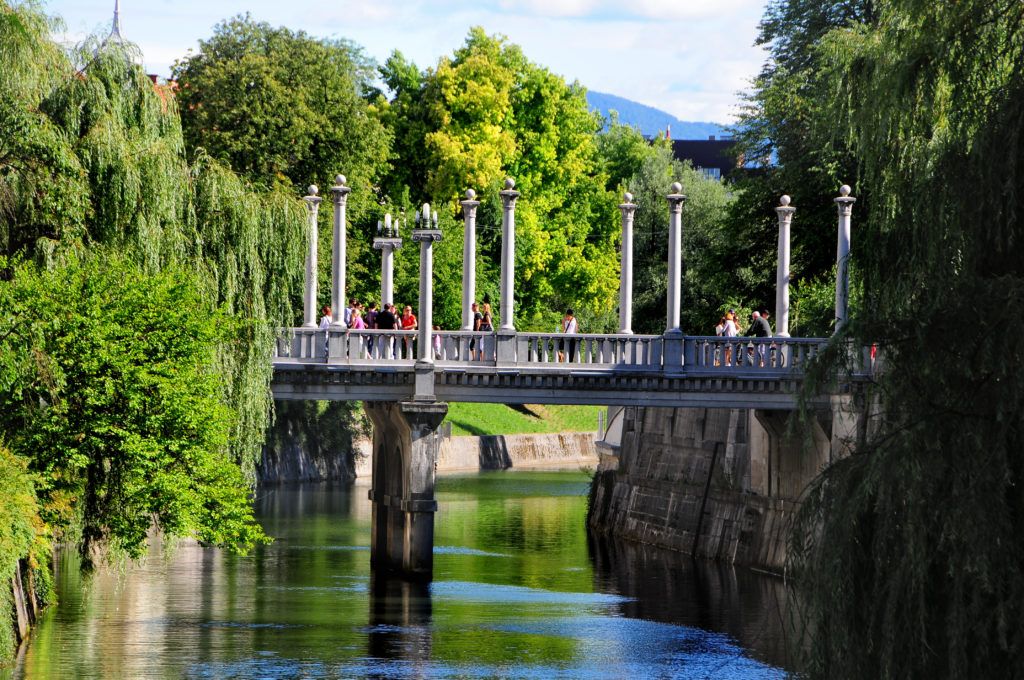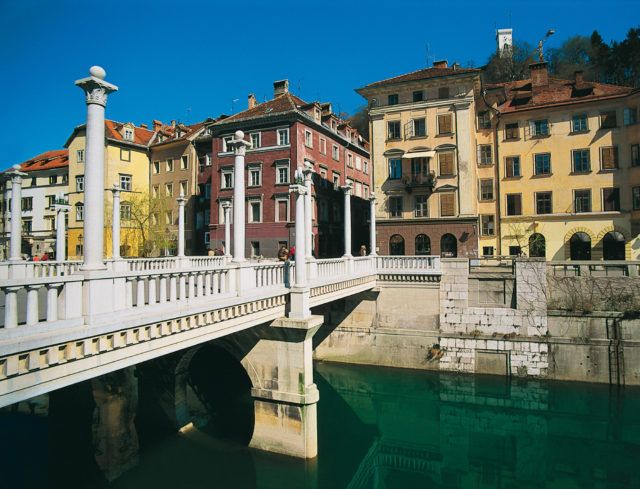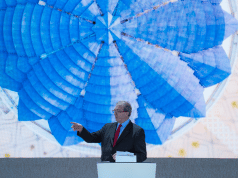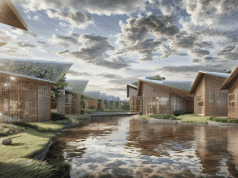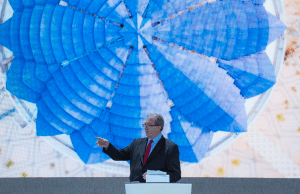Another Plečnik creation, this elegant 1930’s bridge is named after the cobblers’ workshops located on its predecessor.
Cobblers’ Bridge is something of a foyer between two former parts of the town, as it actually connects two different districts – the bourgeois side of the city, which developed under the castle hill, and on the other side the aristocratic part of the city.
In the Middle Ages the original wooden bridge was called the Upper bridge (Zgornji most), which was replaced in 1867 by a cast iron bridge made by the decantation foundry in Žužemberk. Today’s Cobblers’ Bridge was built by Plečnik between 1931 and 1932, and connects Mestni trg and Novi trg squares, the two major areas of medieval Ljubljana.
Due to the narrow streets of Novi trg square the wide bridge was used for commercial purposes, with its edges occupied by butchers from its beginning and at that time giving it a different name: Butcher’s Bridge. With the expansion of the city the existence of Butchers’ Bridge became inappropriate, because the water in which they washed and cleaned the meat flowed through the town centre and therefore constituted a great danger for the spread of epidemics. In 1614 the butchers were therefore moved to the river area below the church of St. Nicholas and near to the current Dragon Bridge.
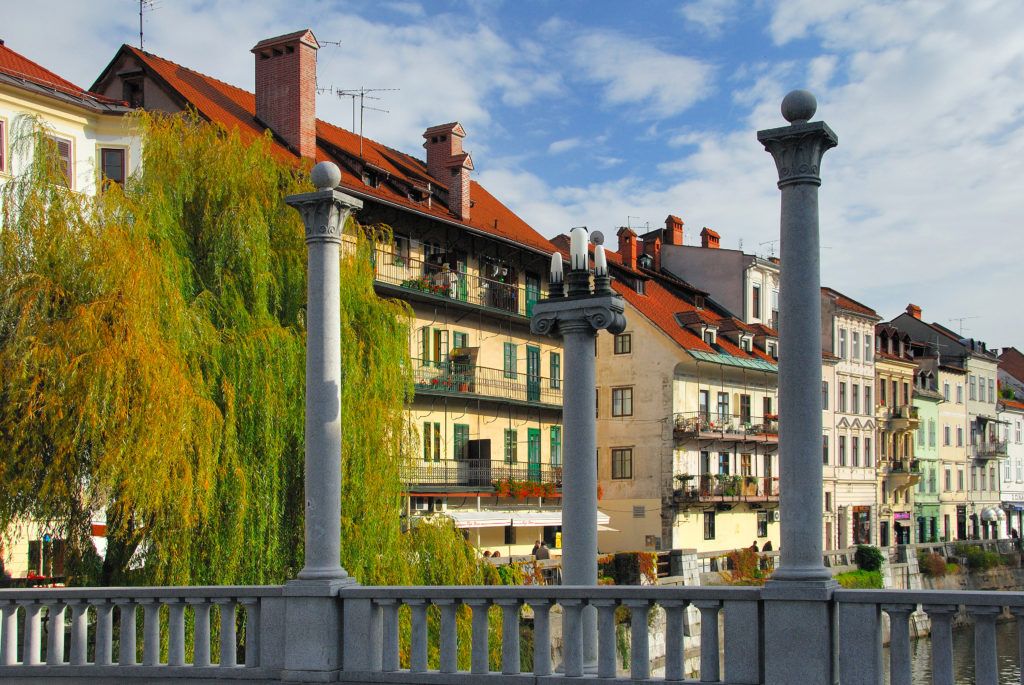
In 1864, when the bridge was completely burned, a new wooden one with shacks installed on it (this time for Shoemakers) replaced it. It was from this era that the bridge has been known as the ‘Cobblers’ Bridge’ (German word: Schuster – Shoemaker).
Plečnik designed the bridge as a market above the water that in the original design was supposed to be covered with a wooden pergola. The idea of a wooden pergola was later abandoned, because the range of wooden beams for a pergola was too large and only columns that restricted market space above the water would remain. Today, there are two different types of pillars on the bridge: Corinthian, which limits the space, and Ionian, which bears the light.
